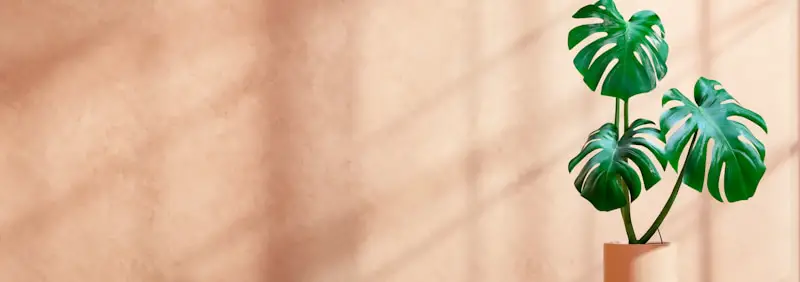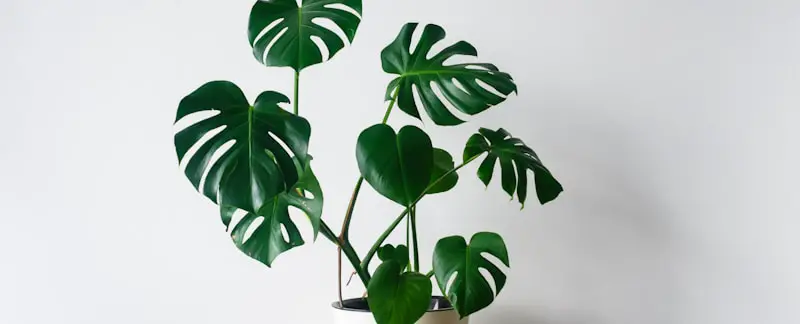Swiss Cheese plants, also known as Monstera deliciosa, native to South America, are a very popular and cherished household plant. These plants are easy to maintain; however, they could quickly become droopy when neglected or not properly taken care of. If you notice your Monstera is droopy, you do not need to become too worried; instead, you need to identify the cause and fix it.
The most common reasons your Monstera is droopy are lack of water, low light, overwatering, transplant stress, pest invasion, and fertilizer problems. Monsteras thrive when the soil is slightly damp. Droopy Monstera leaves can be fixed; however, the issue must be dealt with earlier.
The striking split leaves of the Swiss Cheese Plant make them the desire of an avid plant lover. With the giant leaves that look like green faces, these beautiful plants create an animated vibe and add character to your home.

Why Is My Monstera So Droopy?
Monstera leaves could become droopy for several reasons like inadequate or excessive watering, lack of lighting, fertilizers, and other issues. Regardless of the cause, the good news is that these issues can be easily dealt with. However, to correct this, it is essential to first identify the cause, then fix it appropriately. Below we will be explaining some factors that could be responsible for your Monstera to droop.
Underwatering
This is a very common cause why many plants, including Monstera, droop. If you notice your Monstera plant is looking dull and deprived of life, you can investigate the soil to be sure if it has enough water or not. To do this, you can use a moisture meter or deep a tip of your finger in the soil to feel the dampness.
Once you confirm that underwatering is the issue, a way of fixing it is to water the plant thoroughly. You can place the flower pot into a wide container filled with water and allow the plant to soak for about 1 hour till you are sure the soil is sufficiently moist. Afterward, take the pot out, let it drain excess water, then return it to its usual spot.
Improper Lighting
Monstera, just like every other plant, needs lights to photosynthesize. You should know that Monsteras are forest plants that need plenty of light but little direct sunlight. However, too much direct sunlight could affect these plants and make their leaves develop brown spots.
Failure to get enough indirect sunlight could also make your plant begin to droop. The best light condition for Monstera to thrive well is under indirect bright light. To achieve this, ensure your plant is positioned in an east-facing window spot and gets about 6 to 8 hours of light daily.
Fertilizers Problems
Another reason your Monstera plant could become droopy is fertilizer problems. These plants require adequate fertilizers during all periods but could thrive well with less fertilizer during winter. Too many fertilizers could make the soil too toxic, which could damage your plants.
So, if you suspect excess fertilizers being the reason your plant is droopy, you need to flush the soil with water. This would help remove excess fertilizer salt from the soil. However, if you notice this method is ineffective, you can repot your plant into fresh soil.
Overwatering
Just as underwatering of your Monstera could make it droopy, excess water in the soil could also make your plant droopy and make the leaves appear yellow. To be sure if the plant is overwatered or not, you can dip a finger into the soil or make use of a moisture meter. Overwatering is the issue once you feel the soil is soggy or the meter reads wet.
To solve this problem, check if the plant pot has drainage holes. If it has and the soil is not draining, it could indicate that your plant roots are getting too big and probably already blocked the drainage holes. So, what you need to do is to repot the plant into another pot with drainage holes.
Pests
An attack on your plant by pests and insects like thrips, spider mites, and bugs could cause it to drop. The effect of these pests is that they end up sucking out nutrients from the leaves and stem of your plant, which then results in dropping. To be sure of pest attack, you can inspect the plant for cobwebs, red dots, or actual insects around the plant.
Once you confirm a pest attack, you can use an insecticide to treat the plant. In addition, you could also look out for the pests and kill them yourself or use a hose to wash them off. It is important that you always check the undersides and the top of the leaves regularly; it is best to deal with pests by attacking before they become settled.
Why Is My Monstera Droopy And Yellow?
It is one thing for your Monstera to be droopy; we listed some of the causes, including pests invasion, overwatering, underwatering, low light, and fertilizer issues. However, when your plant starts turning yellow, you know there is a serious problem that you must address. Some of the reasons your Monstera is yellow are:
Temperature Stress
It is important to always have it in mind that Monsteras are forest (rainforest)plants, so they thrive at a certain temperature. Monsteras do not thrive at all in cold weather. If the temperature drops below 10° Celcius (50° Fahrenheit), Monsteras stop growing, and the leaves turn yellow.
Also, the plants become stressed when Monsteras are exposed to extreme heat, including direct, scorching sunlight. Any form of temperature stress causes the leaves to turn crispy, yellow, or brown. It is easy to assume that the stress can start with the older leaves; the younger and tender leaves are more susceptible to temperature stress.
Nutritional Deficiency
If a Monstera plant is not getting the required nutrients, it will be droopy and yellow. All plants need three primary nutrients, potassium, phosphorus, and nitrogen. These nutrients affect the biological functions within the plant, so if the Monstera is deficient in any of them, it will be unhealthy.
If the Monstera lacks phosphorus, it will have stunted growth, and as the condition worsens, the stems and leaves darken and develop purple or reddish discoloration. However, deficiency in phosphorus does not cause yellow leaves. If the Monstera lacks nitrogen, it will not grow well, and the leaves will display chlorosis.
Chlorosis is when the leaves are light, and the oldest leaves turn yellow completely. If the Monstera lacks potassium, the leaf edges will be brown or burnt, and chlorosis takes place between the leaf veins. The older leaves turn yellow first because the plant redistributes the available potassium to the younger leaves.

Why Is My Monstera Droopy After Repotting?
Sometimes, you notice that your Monstera becomes droopy after repotting it; while this will be a strange occurrence, it can occur, and you need to know what causes this. When all the conditions are appropriate, Monsteras thrive and grow rapidly. The need to repot to a larger plant becomes essential as time goes by.
One mistake made during repotting is not sustaining the conditions and environment where the Monstera was before repotting. Some of the reasons Monstera plants become droopy after repotting are waterlogging, lack of support, over-fertilization, and insects and pest infestation.
Final Thoughts
If you have Monstera in your homes, here are some tips to keep in mind; plant in a good location, use suitable potting soil, use the appropriate pots, water regularly but not too often, use the appropriate fertilizer, trim and clean regularly. If your Monstera droops or becomes yellow, the main issue might be watering.
Keep reading: Why Is My Fiddle Leaf Fig Dropping Leaves? [ANSWERED]
Victoria is the owner and main author of hobby plants. She loves spending her free time in her garden planting and taking care of her plants. Victoria hopes you enjoy the content here!